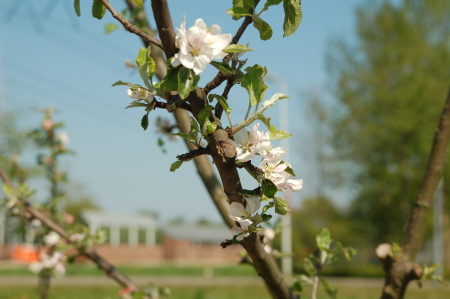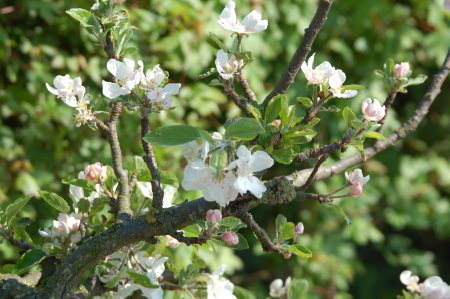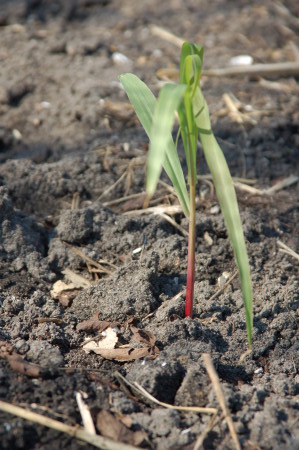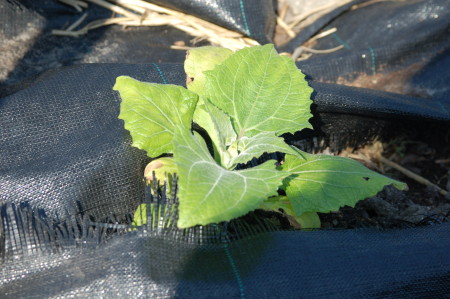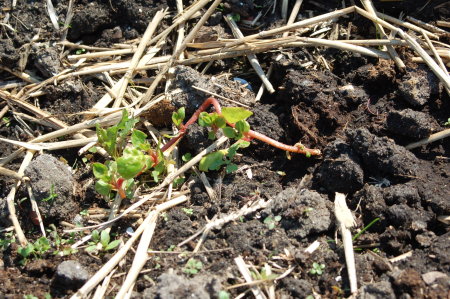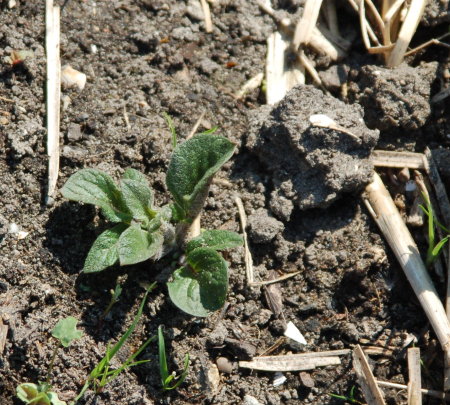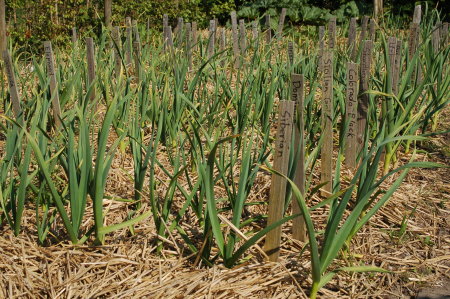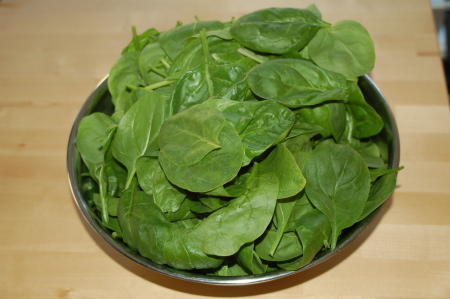Starting a new garden on grass has to be one of the most discouraging things imaginable.
Jane on Horiticultural recently posted on how new allotmenteers in the UK often get stuck with some of the worst plots, and how this can quickly turn into a very discouraging situation for beginning gardeners. I think anyone starting an urban garden in North America or elsewhere can easily find themselves in a similarly discouraging situation trying to get rid of an established lawn.
Doviende on Anarchocyclist has recently been posting about a garden he is expecting to build. He lives in the Vancouver area of British Columbia, and he is looking for a new place to live, a rental with roommates, and space for a garden. Since he hasn’t found his new place yet, there’s no way to know for sure what it will look like, but it seems likely he will have to start with a lawn.
I have some ideas, but I was also hoping some of my readers would have some ideas for him too. One of the things I already commented on in his post was that different gardeners had different ideas about things, and one of the best things was for him to read a couple of different people’s ideas, then decide what he thought was the best for him to do. In that spirit, even if you disagree with me, I hope you will feel free to share any thoughts you have.
What to Look for in a Garden Space
The first thing may be to think about what makes a good garden, and what kinds of things he should be looking for.
Sun is very important for vegetables. It’s very important if the garden area gets any shade at all, for any part of the day. Ideally, the garden should have no obstruction towards the south.
It will also help a lot if the garden is as level as possible.
You should give some thought to if the ground could be contaminated with anything. Perhaps if it is next to an old house, there could be lead paint in the ground. Maybe if it used to be an industrial or agricultural area, there may be other chemicals present. You might ask around if anyone knows of any possible contaminants.
A soil test might be a good thing to do early on, both for nutrients and contamination, if it can be arranged.
Can anyone think of anything else?
Getting Rid of the Lawn
Grass is so hard to get rid of in part because it hides so many other weeds. Even if you manage to quickly kill the grass itself, you can easily find yourself battling with dozens of new and different weeds. You also always have to plan a good barrier on the edges of the garden, or encroaching weeds will constantly be issue.
Digging is always only a partial solution, because pieces of roots will always be left in the ground that will grow into new weeds. Using a garden tiller on fresh grass is a recipe for disaster because it will chew the weeds up into tiny pieces which will all turn into new weeds. Digging also always uncovers weed seeds buried in the ground.
Many people argue a garden tiller is never a good thing to use. In any event it should never be used on ground with established weeds in it. I use one sometimes for green manure or for mixing amendments into the ground, but I will probably stop using it eventually because it’s not really very useful and wastefull of energy.
No-dig or no-till solutions always take time, and when you are starting a new garden the last thing you want to do is sit around and wait another 6 months waiting for the weeds to die.
So what’s the answer? Probably some some combination of dig and no-dig methods? At least to begin with?
Lasagna Gardening
I suggested that depending on the size of his new garden, he take the approach of mulching layers. For example covering the grass first with a layer of cardboard or newspapers, then a mulching material like grass, leaves or compost. The expectation is that this would rot in place, and the plants could just go on top of it, perhaps together with more mulch.
I didn’t think to mention it before, but he may also want to combine this with raised beds. Raised beds might be too expensive and too much trouble if he is only going to stay in the same place for a few years. Raised beds can be made with almost any material except treated wood! Treated wood will have chemicals you won’t want in your vegetable garden. Wood that isn’t rot resistant (like pine) will only last a couple of years, but maybe that will be enough. Bricks or rocks also make nice raised beds, as does plastic lumber.
How long should he wait before trying to grow on ground prepared this way? I think about 6 months.
Lazy Bed Method Potatoes
This is an Irish method for growing potatoes directly on grass. Details can be found here, and a variation on the method here.
Basically if you imagine a 4 foot (120cm) wide row in your garden subdivided into 1 foot (30cm) sections as follows:
* A * B * C * D *
* * * * *
* * * * *
* * * * *
* * * * *
On row B & C you first put a layer of compost, then the seed potatoes on top of that. You then dig up the sod in rows A and D and fold it over the seed potatoes with the grass facing down.
As the potatoes grow you should ‘hill them up’ by digging dirt from rows A and D, always maintaining about 2 in (5 cm) of potato plant above the ground.
About a week after they bloom you can use your hands to search for new potatoes in the ground, but remember this will reduce your final harvest. After the halliums (plant tops) die back, you can dig up the potatoes in the ground.
If you grow potatoes you should learn about late blight, because this has become a serious problem all over the world. I can give you more information on this if you are interested.
After you grow potatoes like this, the ground will be left (mostly) free of weeds and ready to be planted with something else.
Rotation is very important with potatoes, and you shouldn’t use the same ground more than once in three or four years, so you should plan accordingly and only use a fraction of your garden for potatoes.
Compost
Doviende asked about compost, and what are good systems for beginning gardeners. Specifically he was thinking about a compost tumbler, so he could get compost quickly.
I’ve never used a compost tumbler, so I can’t really offer a lot of advice. I’ve always viewed a tumbler as unnecessary and too expensive, but maybe there is someone out there who has had a good experience with them?
Does anyone have any other suggestions for a good composting system he could set up considering his circumstances? A container or a pile?
What to Grow and When
Doviende in his post said:
“We’re moving May 1st, so counting a few days to actually dig up an area of grass in the backyard and maybe bring in some extra topsoil, i should be able to plant things in about the 2nd week of May.”
What’s realistic to plan for and expect? What kinds of things should he think about planting and when?
Nitrogen fixing plants like peas and beans might help the soil, but these are difficult to grow when there are a lot of weeds.
Can anyone think of good plants he could get in quickly in May?
Am I missing anything else in this post? Does anyone else have any other ideas?


